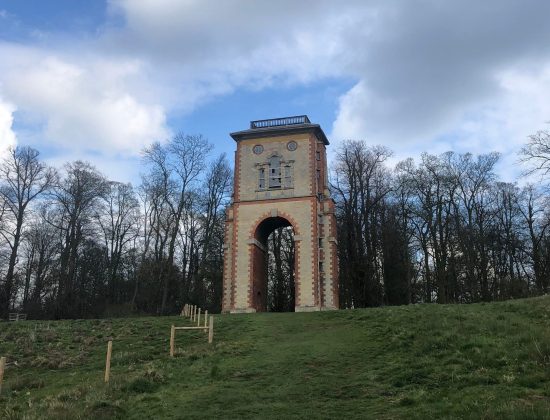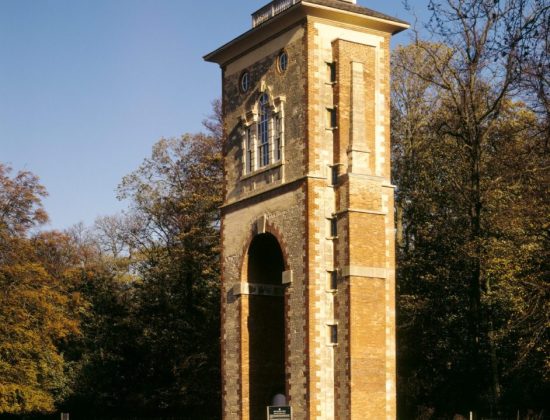Bellmont Tower is an 18th century folly located in Belton Park, near Grantham, Lincolnshire, part of the National Trust estate centred on Belton House. Commissioned by Sir John Brownlow, 1st Viscount Tyrconnell in the early 1750s, it was likely built by master builder Samuel Smith and mason William Grey and proudly inscribed “BELLMOUNT 1750” on its façade.
The tower is built in two stages, featuring a tall, rounded arch below with a room above used as a belvedere or observatory for Lord Tyrconnell’s telescopes and microscopes. Its architecture includes Venetian windows, a slate roof with wooden balustrade and stepped brick buttresses – traces of once present wings removed around 1780 on advice from Philip Yorke to improve proportions. Local lore nicknamed it “Lord Brownlow’s Britches” for the leglike supports under the upper chamber.
The Park was used by the army for training exercises as early as the late 19th century. In 1891, the Lincolnshire Regiment camped nearby and later in WWI a large training camp was established – Bellmount Tower became a focal point for manoeuvres and tent sites in the surrounding fields.
The tower is a Grade II* listed structure (listed since 1979) and underwent restoration in 1989–90, but has since suffered deterioration and vandalism. Thanks to recent funding from the Heritage Lottery and collaboration between National Trust and the Woodland Trust, a woodland trail linking Belton estate and Londonthorpe Woods is planned along with renewed structural restoration and public interpretation.
Though located within Belton Park, access is separate: visitors can reach the tower via a small carpark on Five Gates Lane, followed by a steep but scenic walk up the avenue. The site is especially popular during Heritage Open Days, when additional guided history talks and views from the tower may be available.
Photos courtesy of Visit Gardens and Allan Joyce Architects.




